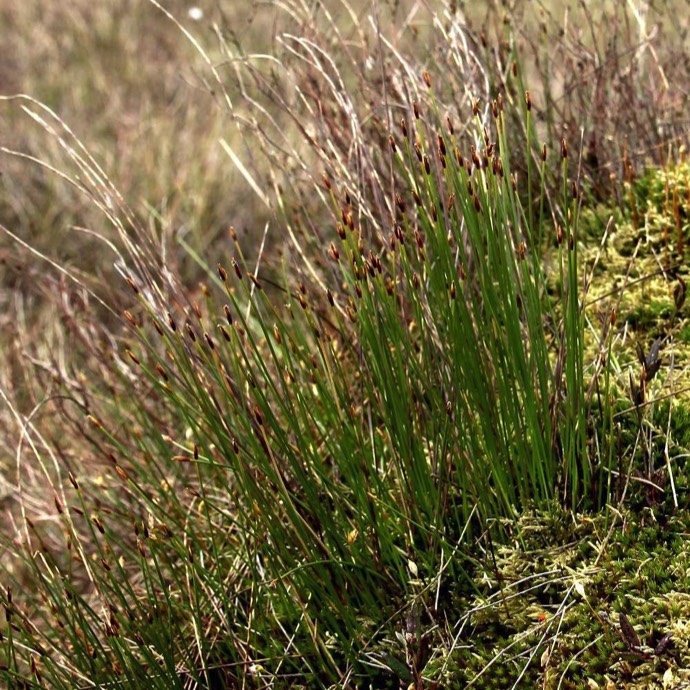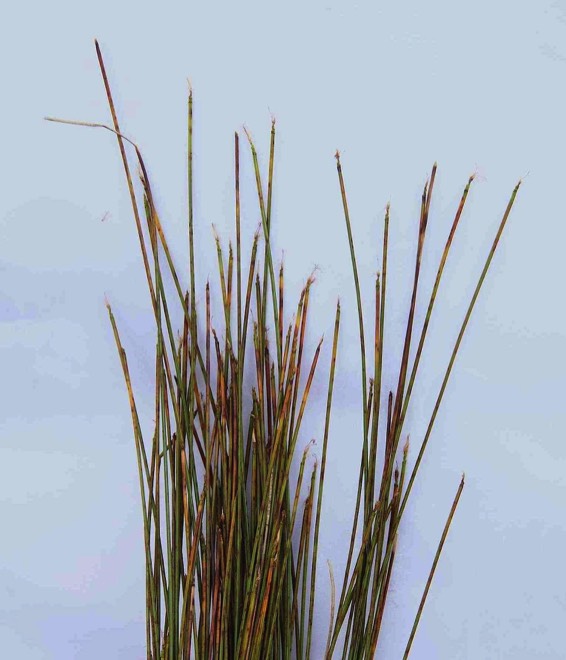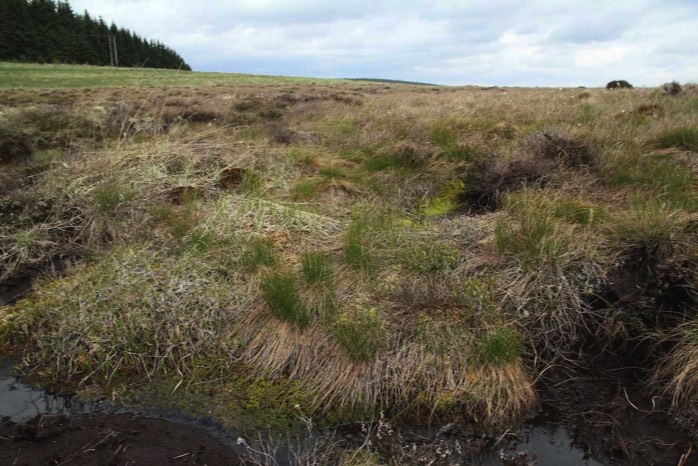Trichophorum ×foersteri
Hybrid Deergrass
Click the buttons below for short summary accounts.
(For detailed information pages, click the drop-down menu items in the sidebar, or there's a clickable menu down below this box...)
Enter the name for this tabbed section: General

It varies a great deal, and when growing with or near either parent, tends to mimic that parent. Thus in Upper Teesdale it grows small and wiry with the T. cespitosum parent in the calcareous mires, but after one ascends the fell to the blanket-bog range of the T. germanicum parent, there is the hybrid, tall, robust, and densely-tufted!
Whether this variation reflects genetic variation in the hybrid itself, perhaps through long selection for the distinct habitats, or (as I think is more likely) the response of a more limited genotype to the varying edaphic conditions, is currently unknown (at least to me).
Although the hybrid is conspicuously sterile and it is difficult to find any fruits which appear to have matured successfully, there is also the possibility or even likelihood of backcrosses. Pollen often appears to be 'normal' and full, but viability needs testing more rigorously. If viable, then this might be a route for the creating of backcrosses.
See also the ⇒Identification pages for more detailed information.
Enter the name for this tabbed section: ID

See the dedicated pages, ⇒Field identification ~ 1 and ⇒~ 2 for much more detailed information.
Although externally similar, the two deergrass species are distinct in their internal morphology, and readily separable. Frustratingly, this widespread hybrid bridges the wide gap between the two!
In the early part of the growing season, mixed populations can be tricky to separate in the field. Length of sheath-opening provides the best guide at this stage.
Back home later, stem-sections of soft young emergent stems can be awkward to prepare and may be ambiguous until tissues mature.
Always remember that the hybrid is sterile and hence through July drops its aborted flowers and glumes and so eventually appears almost completely 'bare-headed' except for perianth bristles and anther-filaments (right). So the three taxa are much easier to separate from July, until dieback in September.
Note that the two species often fail to ripen fruit in some seasons, but then the spikes often retain their glumes, appearing distinctively bleached and pale in the late season, and thus different from the bare-headed hybrid.
The two species and hybrid can be separated with a high degree of confidence by examination of their ⇒stem cross-sections.
Enter the name for this tabbed section: Habitats

In basin- and valley-mires it may be more restricted to the surrounding 'lagg' areas or grow more or less freely across the bog surface.
On ombrogenous (i.e. rain-fed) mires on deep peat in Northern England (as here, at Butterburn Flow) and Scotland it can be hugely abundant on the flatter surfaces above the seepages and runnels preferred by its T. cespitosum parent, in the virtual absence of T. germanicum, which may occur around the fringes on more sloping and thinner peats.
The distribution of the hybrid on blanket-bogs – especially of different degrees of modification – urgently needs work. It certainly occurs with T. germanicum on some bogs, sometimes occupying damper seepage areas. As mentioned above, the hybrid can occupy the drier surfaces of deep peat mires.
Enter the name for this tabbed section: NVC
The publication of NVC communities (Rodwell et al., British Plant Communities, Vol. 2, 1991) pre-dated the clarification of the three deergrass taxa, and so – given its local abundance – the listing of 'Scirpus cespitosus' may often refer to this hybrid.
The wider species, 'Scirpus cespitosus' , is listed under no less than 22 'mire and heath' categories! More work is required on the latitude of the hybrid, but it is likely to be a typical member of the mire communities M15-M20, at least.
I would welcome advice on the matter.
(See Amplett's note (BSBI News, No. 119 (January 2012)), describing this species' habitats in Speyside, along with comments on the other two taxa.)
The wider species, 'Scirpus cespitosus' , is listed under no less than 22 'mire and heath' categories! More work is required on the latitude of the hybrid, but it is likely to be a typical member of the mire communities M15-M20, at least.
I would welcome advice on the matter.
(See Amplett's note (BSBI News, No. 119 (January 2012)), describing this species' habitats in Speyside, along with comments on the other two taxa.)
Links to other pages (also accessible from the sidebar)
Summary pages
Identification pages
Other information